Do you want to start a beauty blog but don’t know where to begin? Let me help you.
I have been blogging about beauty for over nine years now, learning so much along the way. Blogging can initially seem confusing, but not anymore when you know where and how to begin.
When I started blogging, my aim was not to make money but to share what I had to offer in my niche—beauty. Only when I received my first sponsored post offer did I discover the power of blogging. After that, I learned about affiliate marketing, another great way to earn money. It was 2015, and there were not so many blogs, but the competition was still high.
It’s 2024 now, and you can imagine how far blogging has come. There are loads of blogs, but what sets your blog apart depends on how you decide to work on it. Even in this competition, beauty blogging can get the exposure you desire.
So, read on our step-by-step guide on starting your beauty blog on WordPress.
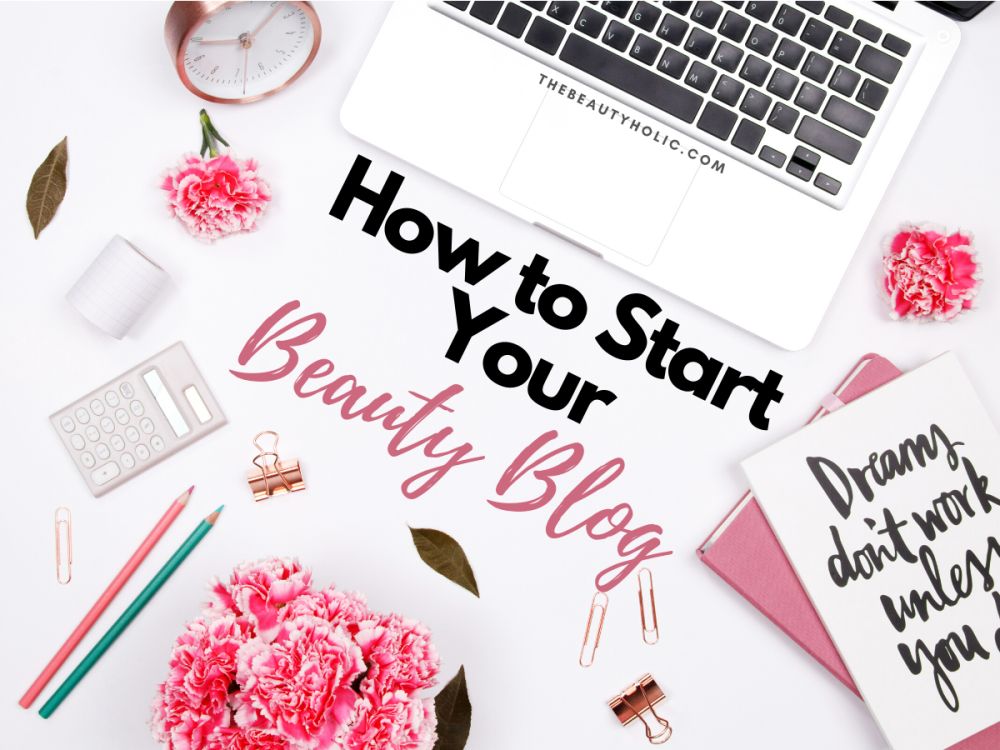
Contents
1. Choose your niche
A niche is a topic or sub-topic that your blog will cover.
It’s all about finding what truly excites you. What’s your passion? Skincare, makeup, or hair care? Or maybe you’re a combination of all three! Whatever it is, be sure it gets you fired up. When you enjoy creating content around something you love, it’ll be much more authentic.
Think about what you’re really good at, too. Are you a makeup artist or skincare freak with a lot of product knowledge? Get your expertise out there. You’ll get noticed and draw readers who want reliable info.
Now, who are you trying to reach with your blog? Young adults, working professionals, or a specific crowd? Knowing who you’ll be writing for will help you create content they like and relate to.
Take ideas from other beauty blogs similar to yours. What are they doing well? Do you see any gaps you could fill? This research can get you ideas for your blog and help you find your own voice. Moreover, as your blog grows, you can always adjust.
Here are a few examples of beauty blog niches:
- Natural beauty: Focus on organic, cruelty-free, and sustainable products.
- Budget-friendly beauty: Share affordable tips and product recommendations.
- Plus-size beauty: Empower women of all sizes with advice and inspiration.
- Men’s grooming: Teach men grooming tips and recommend products.
- DIY beauty: Show how to make beauty products and treatments at home.
In short, pick a niche that is meaningful to you—something you can see yourself maintaining long-term. If you can come up with at least more than 50 unique posts for your topic, you’re good to go.
2. Pick a nice domain name
Now that you’ve picked a niche, you need a domain name.
A domain name is the name you will use for your blog. This is an essential step, so take your time to think of something relevant to your blog topic.
It is recommended to name your blog something that allows you to expand your niche.
Before you pick a domain, make sure it:
- Isn’t copyrighted or trademarked (do proper research before picking a domain to make sure no one owns it)
- Contains no more than 15 words
- Gives an idea that you are a specific niche blogger
- Doesn’t contain any hyphens, special characters, or numbers
- is a .com domain – .net and .org also work but a .com domain is a top-level domain
If you’re confused about what to name your blog, try adding makeup or beauty at the end of your first name. It will go like this: yourname+beauty.com. For instance, I can go for mariyambeauty.com or marymakeup.com.
Tip: Namelix is an online domain name generator that suggests thousands of domain names based on your keyword. I recommend it for finding unique and brandable domains.
#2. Choose a Blogging Platform
First things first, decide whether you want to go for a free blog or a self-hosted blog.
If you want to start a free blog, WordPress.com, Blogger.com, and Wix.com are the topmost platforms for blogging. The best part – they are free. There’s a downside too – you don’t have many options to monetize and customize your blog and its look.
WordPress is the most popular blogging platform and Content Management System and the easiest to use. Did you know that WordPress currently hosts around 60 million blogs? Yep, it’s a popular choice for bloggers.
#3. Get a WordPress Hosting
Each free blogging platform has its own pros and cons and the common thing is – they lack customization features. That is why it is recommended to go for a self-hosted blog.
A self-hosted blog is when you pay a hosting company to host your WordPress.org blog to make it easily accessible online to everyone. It simply means you own the website and have full control over it.
If you are serious about blogging, go for a self-hosted blog. It doesn’t cost a fortune to get started with hosting. There are a lot of hosting companies that provide you with unmatchable hosting. I will recommend BlueHost, which WordPress itself officially recommends for hosting blogs.

With BlueHost in the first year, you get a free domain, a free SSL certificate, and an option to install WordPress in one click without any coding. They also offer a 30-day money-back guarantee for you to try without any worry.
How to Get Started with Bluehost with Few Easy Steps
1. Visit BlueHost
Visit bluehost.com. Once you go there, click on ‘Get Started’.
2. Choose Your Plan
Since it is your first time blogging, I would recommend you go for a ‘Basic’ hosting plan. Now click on ‘Select’.
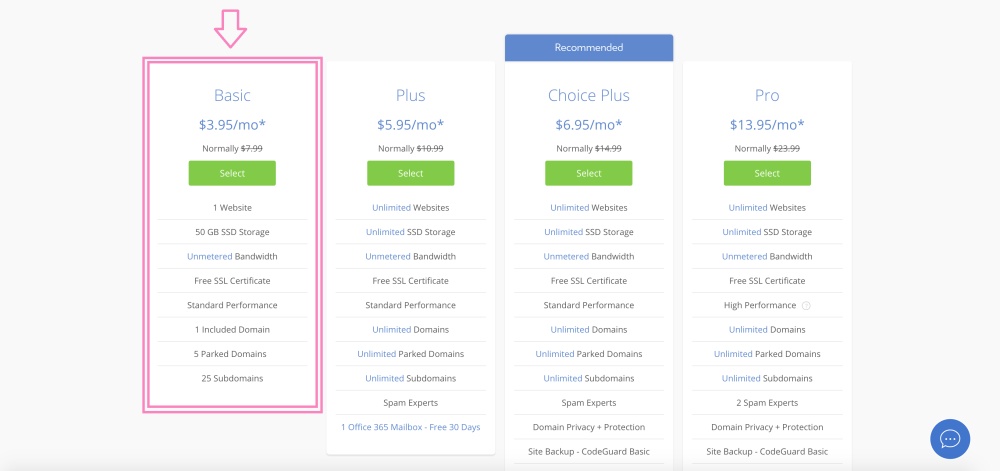
3. Choose your Domain Name
We named our blog thebeautyholic.com. Now it’s your turn to pick a domain name for your blog. I already suggested ideas in the first section so type in the domain name you want and click ‘Next’.
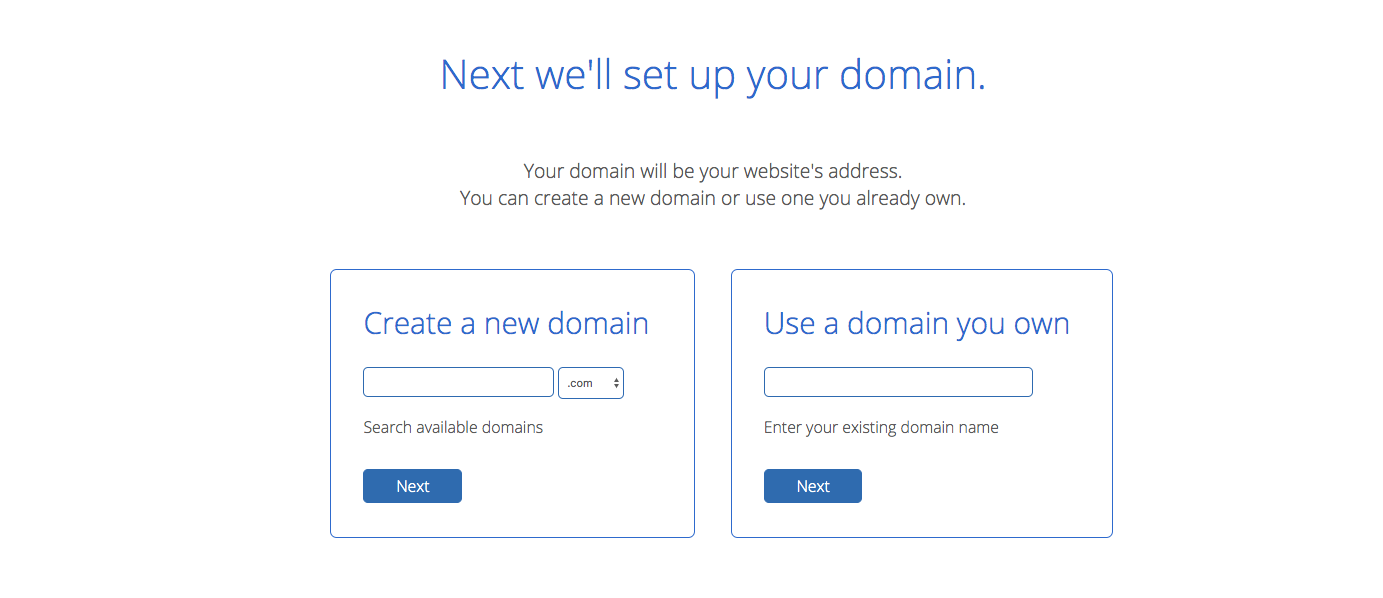
If your domain name is available, you will see the screen something like this:
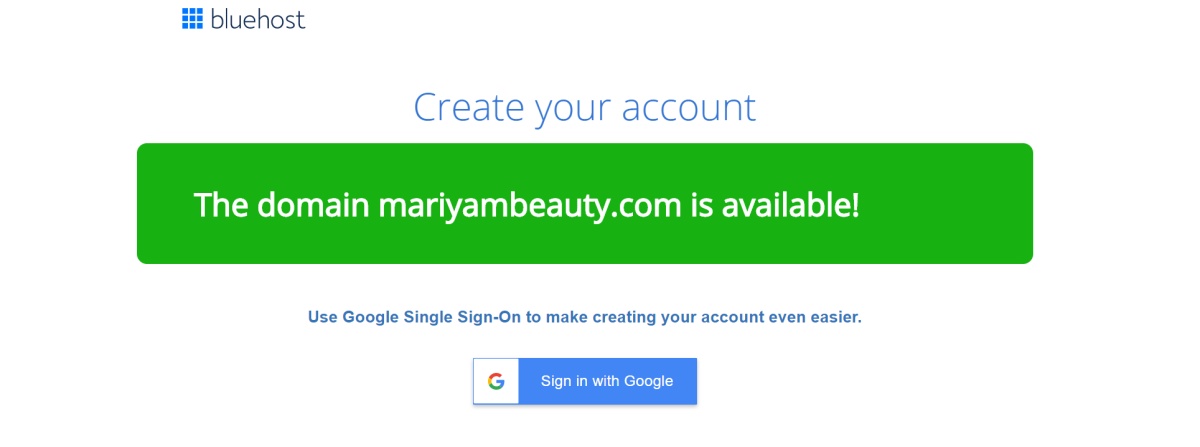
4. Sign up and fill details
Now that you have selected your domain, it’s time to fill out the details to set up your BlueHost account. Make sure you choose the ‘Basic’ plan, which is perfect and pocket-friendly for beginners.
If you want it for 24 months, it would be $4.95 per month and $5.95 for a 12-month plan. That is why I am suggesting a 36-month plan, which costs $3.95 per month.
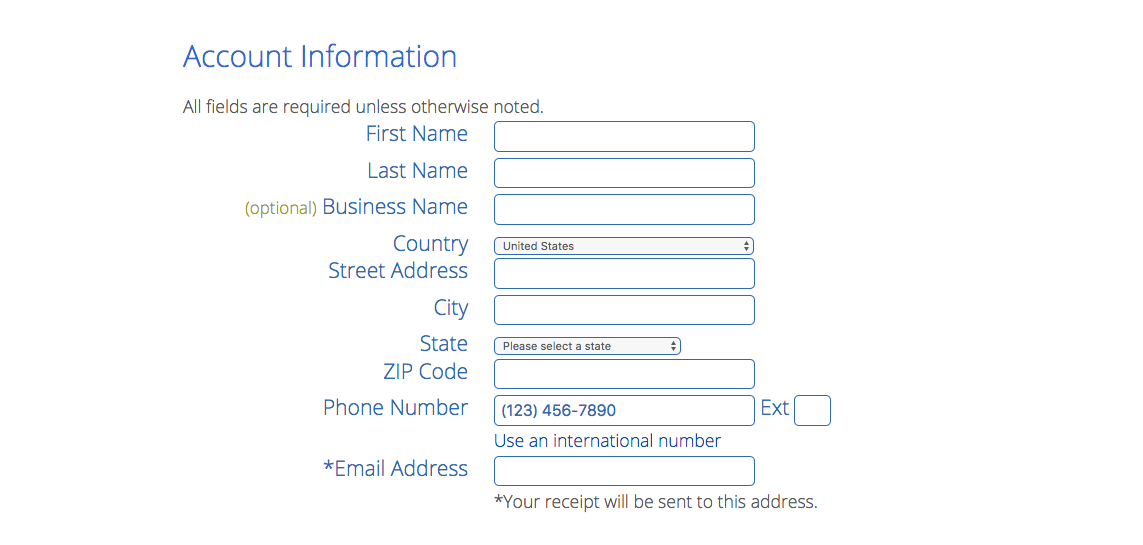
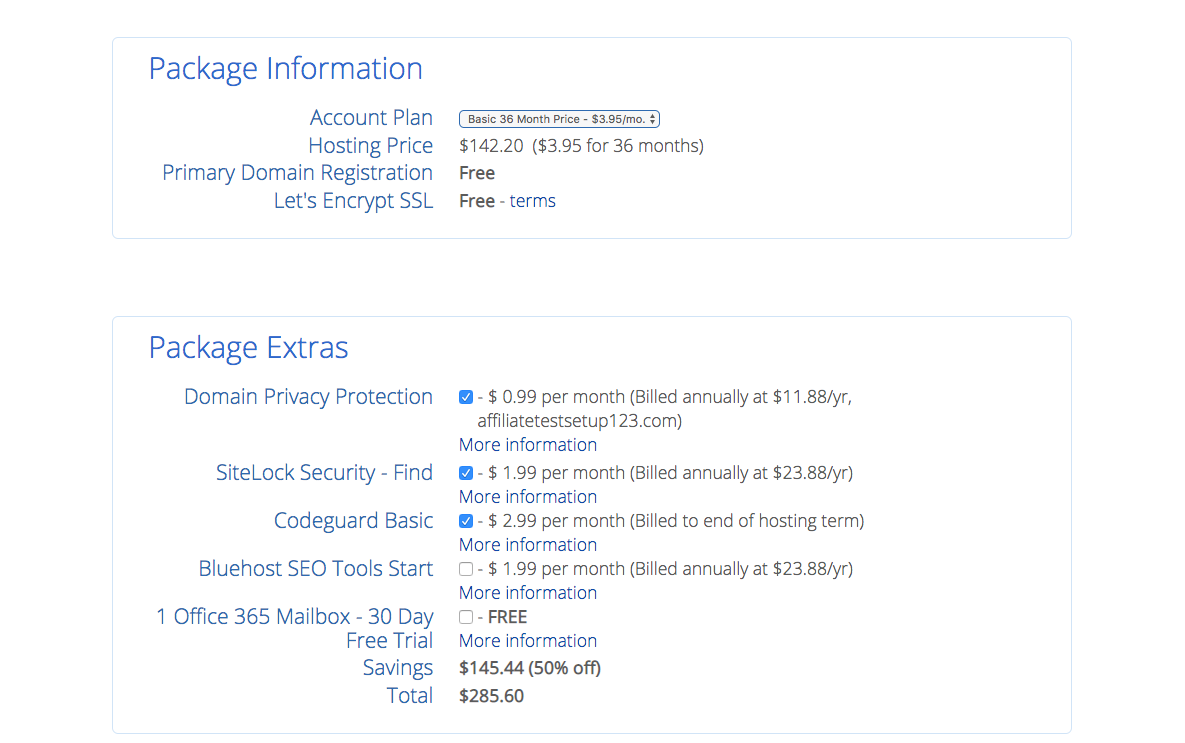
Note: Untick all options of ‘Package Extras’ since you won’t need them at this stage. (We’re saving money, right?)
I highly recommend ‘Domain Privacy Protection’ because it hides your personal details, including your email and address.
After entering your payment details, click ‘Submit’.
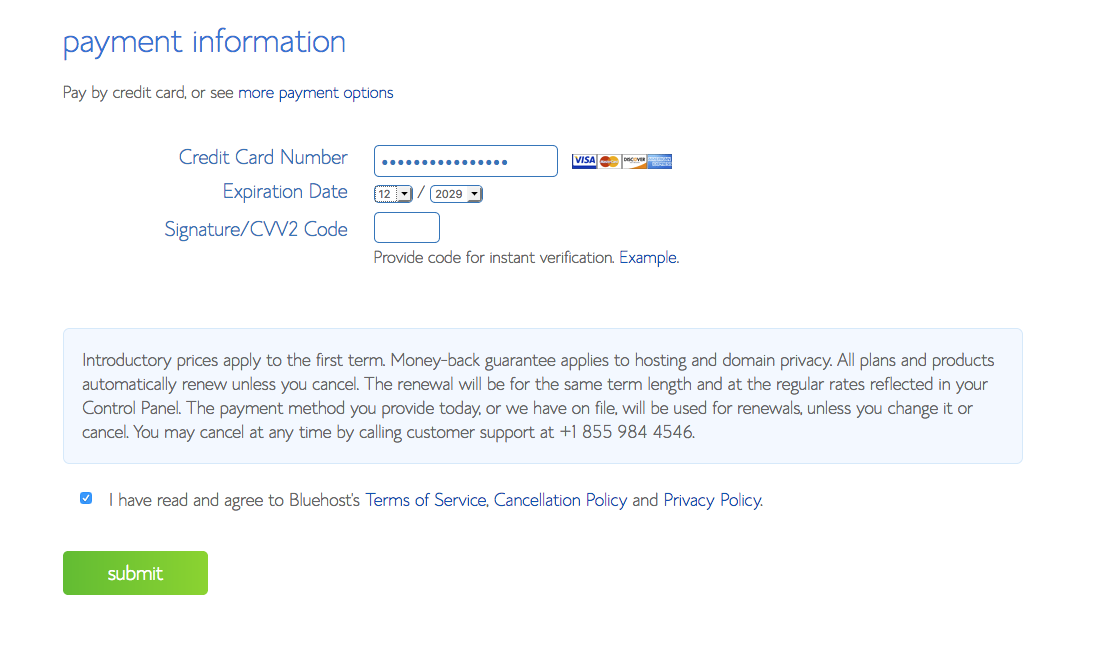
5. Set up your blog
After creating the account, log in. BlueHost recently revamped its dashboard, so once you log in, your WordPress starts to install automatically, saving you time and hassle.
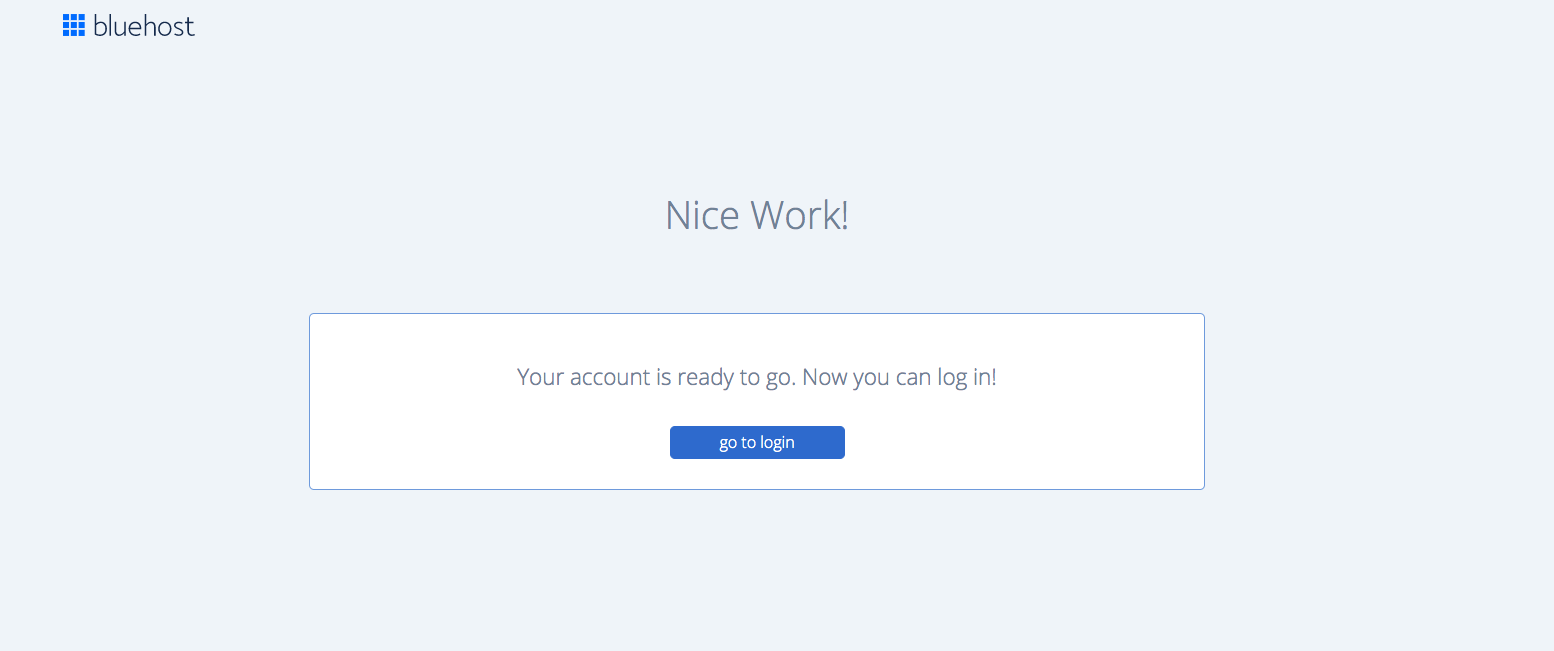
It might take 5 to 20 minutes to install, but it usually takes around 5 minutes. If it takes far too long, refresh the page and see if it is installed. Once it is installed, you will receive an email containing all the details of your newly created beauty blog!
This is what the new BlueHost dashboard looks like.
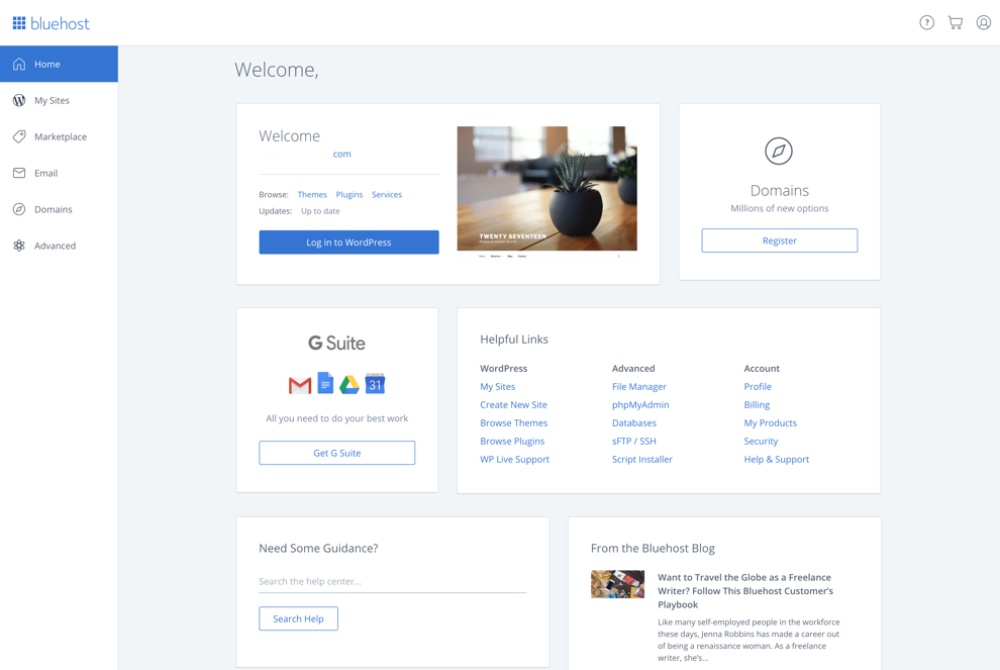
From ‘Dashboard’, you can access your blog’s admin URL and all the other essential things.
Now we are done with installing WordPress and creating your blog part!
Back in 2015, I had free hosting on blogger.com, which was great but didn’t let me fully control my site. From 2016 to today, I run my blog on self-hosted WordPress, giving me a bunch of options to design it the way I want.
Going for a self-hosted blog has many benefits:
- WordPress is a free, open-source platform that most hosting companies provide as a ‘one-click install’ option.
- You get hundreds of free and paid themes to choose
- WordPress gets frequently updated for a seamless experience
- You control EVERYTHING on your blog
#4. Essential Steps After Installing WordPress
Now that you have installed WordPress, you need to be sure that your site is perfectly set up. Here are some things to do quickly before you begin your blogging journey.
Login to your WordPress dashboard
The link to your WordPress will be something like this: to yourdomain.com/wp-login.php. Insert the username and password to log in to your account.
You will be taken to your WordPress dashboard. You’re going to manage your whole blog through this dashboard.
Basic Settings
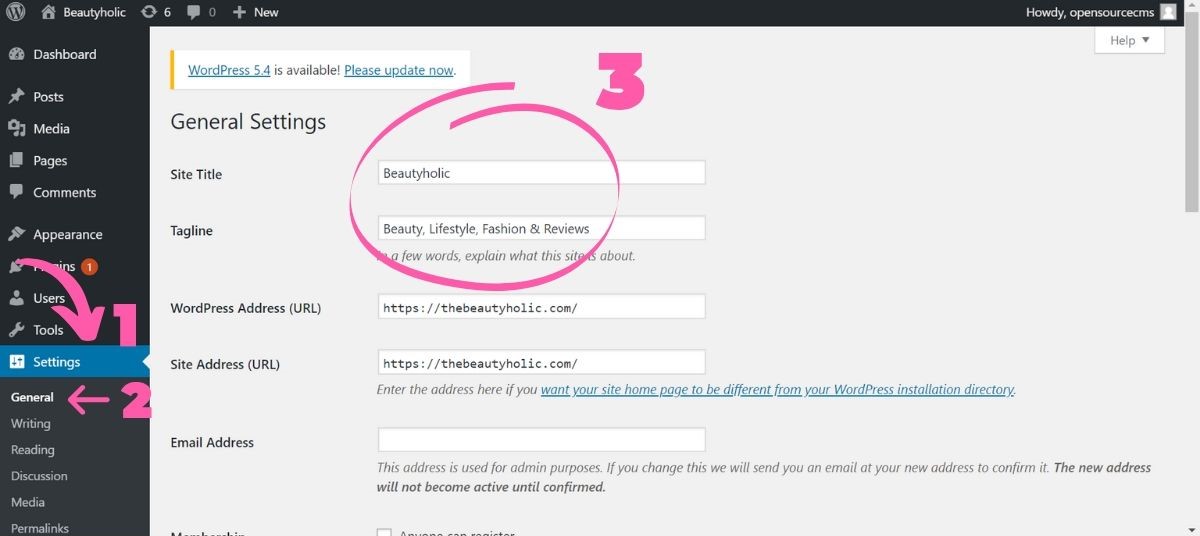
From your WP dashboard, on the black left sidebar, click on ‘Settings’ -> click on ‘General,’ and there you will see the option to fill in the ‘Site Title’ and ‘Tagline.’ Fill in the name of your site in the ‘Site Title’ option. In the ‘tagline’ section, type what your blog is about in not more than 5-6 words.
When you scroll down, you can also set your timezone and preferred language.
Make Sure Your Site is Visible in Search Engines
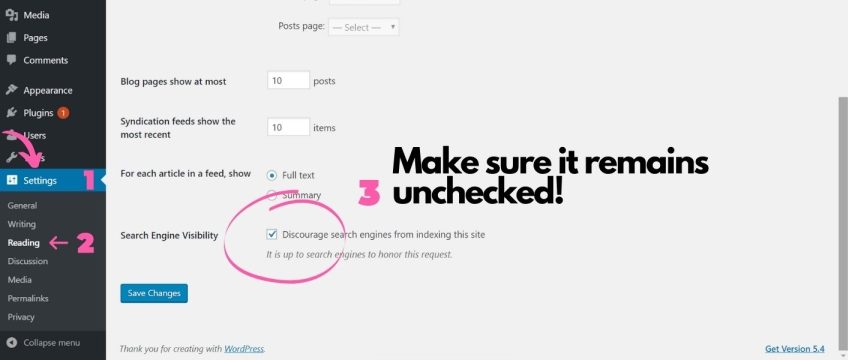
Under ‘Settings’ in the main sidebar, click on the ‘Reading’ section. When you get there, make sure ‘Discourage search engines from indexing this site’ is unchecked. It is unchecked by default, but we must ensure that it remains the same so that Google can notice your site.
Permalinks
‘Permalinks’ is basically the structure of your post links. Let me give you an example. Here are two permalinks:
- mydomain.com/2020/11/03/myfirstpost
- mydomain.com/myfirstpost
Which one did you find easy? If your answer is no. 2, you understand all too well.
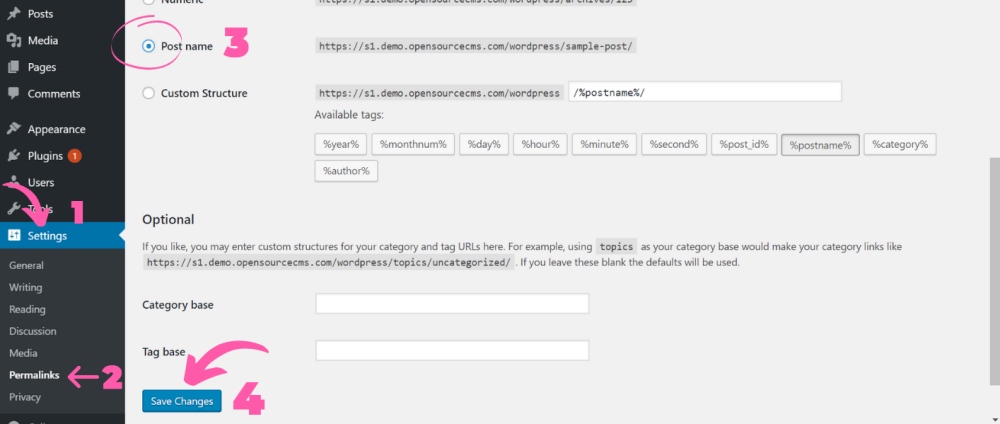
To set your permalink structure, hover on ‘Settings’ from the left sidebar and click on ‘Permalinks.’ After the page loads, scroll down and click on the ‘Post Name’ structure and save changes.
Now your post URLs will look good, and search engines will like it.
#5. Get Your Blog a Nice Theme
After you have set up your blog with the basic settings, it’s time to choose a theme. By default, you will have a WordPress 20-something theme, but we’re not going to keep that.
WordPress offers both free and paid themes that are highly customizable. To explore the themes available on WordPress, hover over Appearance -> click on Themes and click ‘Add New.’
There you’ll find four tabs: Featured, Popular, Latest, and Favorites. You may want to click on ‘Popular’ to check out trending themes that are widely used.
As a beauty blogger, you’d want to focus more on the aesthetics of a theme. It should give off the vibes of your personality. If you like a theme, hover on it and click ‘Preview’ to see its live preview of how it will look. Once you finalize a theme in the live preview, click on ‘Install’ to install the theme, followed by tapping the ‘Activate’ button to activate it on your blog.
You can always pick another theme by following the process mentioned above without losing your data, such as posts and pages.
#6. Create Essential Pages
Three important must-have pages on your site are – About, Contact and Hire (if any).
To create a page, navigate to your dashboard and hover to ‘Pages.’ Then click on ‘Add New’ to create a page. Hit ‘Publish’ when you are done.
1. About Me
When people visit your blog, you want them to know about you, right? You may want to tell them how and why you started your blog and everything else you want to share with them.
Having an About page is essential to build a relationship with your readers. When someone likes the content you share on your site, they will look for an ‘about’ page to know what you are about. Every blog has it – now you know why.
What should you write on the ‘About Me’ page? Start by writing your name and where you are based. Then frame different paragraphs answering these questions:
- What is your profession? (if any)
- What are your hobbies?
- Why did you start blogging?
- What is the aim and vision of your blog?
2. Contact
When a reader has a query or just wants to say hi, where would they go? How about a brand wanting to work with you for paid collaborations? That’s where a contact page helps you.
Without a contact page, getting in touch with you wouldn’t be possible. Creating your contact page is effortless, so you don’t have to put major effort into it.
You can create a contact form or simply write your contact details like an email on your contact page. This will help readers, other bloggers, and brands to contact you on the go.
3. Hire
If you provide any service that matches your niche or blog, create a ‘hire’ page where you will list the services you offer. It can be any—for example – content writing, graphic designing, and so much more. You never know when someone may like your work and hire you for your services.
#7. Create Your First Post
We are done with all things basics. Now is the time to create and publish your first post.
Your first post can be about anything – A message to your readers, a review of your favorite product, beauty tips or hacks.
To create a new post, log in to ‘Dashboard.’ Click on ‘Posts’ and then click on ‘Add New.’ Write your post and attach some good images that you own. Hit ‘Publish’ when you are done. You just created your first post. 🙂
#8. Blog Post Ideas
After creating your first post, it’s time to create more. Here are some ideas to get started:
- An honest and detailed product review with high-quality images
- Your skincare routine
- A makeup tutorial
- How to apply/do X
- A post on your beauty products ranked from best to worse
- An interview with a beauty expert or influencer
- What’s in your makeup bag…
If you’re looking for more detailed ideas, check out my article on beauty blog post ideas here.
There are gazillions of blog post ideas related to beauty you will discover when you start your beauty blog. Feel free to take inspiration from my blog, The Beautyholic, too.
FAQs on Starting a Beauty Blog
Do beauty blogs make money? Are they still profitable?
Absolutely, yes. While the earning potential differs, you can earn income through:
- Affiliate marketing: promote products and earn a commission on sales.
- Sponsored content: collaborate with brands on sponsored content.
- Selling digital products: offer ebooks, courses, or printables.
- Advertising: place ads on your blog.
- Freelancing: offer your services as a beauty writer or consultant.
All in all, beauty blogs are still profitable. As long as you make high-quality, useful content and build a loyal readership, you can make money from your blog. To earn significant money, you’ll have to put in time and effort and stay consistent.
Are beauty blogs still a thing?
Absolutely, they’re still a popular and thriving niche. The beauty industry is booming and everyone is always seeking advice, inspiration, and product recommendations. While social media platforms have become influential, blogs give readers a more in-depth and personalized experience.
Over to you…
Knowing how to start a beauty blog that’s self-hosted isn’t as difficult as you think. All you need to do is buy a domain, get good web hosting and set up essential settings on your blog. After setting up the basics, you can start creating awesome posts your readers will love reading.
Do you still need help in setting up your blog? I’m just an email away and will be happy to assist. 🙂

very good post Mariyam 🙂
Great post. The best advice is definitely to go self hosting.
thanks for the information
Phenomenal tutorial for those who are interested in starting a blog. Not just a beauty one!!
Many of these tips can be used for any type of Blog. Thanks.
This is really well written and informed. I appreciate that you spelled it out step by step. While I don’t have a beauty blog, I think most of this could be utilized in many blog genres.
Very informative! I m going to send this step by step guide to my bff , because this was very detailed and she will be able to follow it!
Great post. So helpful for people who want to set up their own blog.
Great Post Mariyam,
It was so helpful… and useful for anyone who wants to create their own blog.
Thanks dear good content I will work upon it 😍